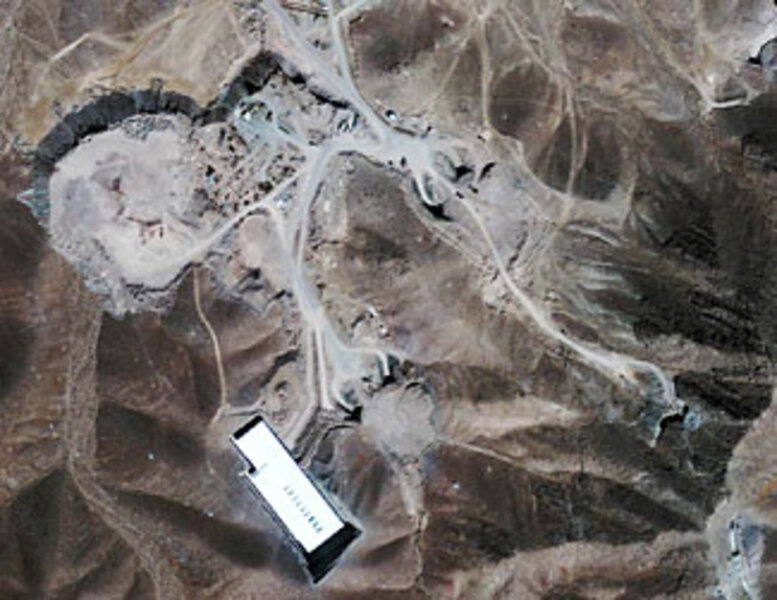Iran nuclear program: UN's first look inside secret site at Qom
Loading...
| Washington
Iran's newly revealed uranium enrichment plant near Qom is at an advanced stage of construction, according to a report from the first group of UN inspectors allowed inside.
No centrifuges – the spinning tubes that do the actual enriching – have been installed at the facility. But centrifuge mounting pads are already present, as are associated pipes, electric cables, and cabinets, according to the United Nations' International Atomic Energy Agency (IAEA) report.
The Qom plant appears to be about the right size for 3,000 centrifuges, grouped into 16 cascades. Iranian officials told inspectors they plan to use only older IR-1 centrifuges at the site, which they call the Fordow Fuel Enrichment Plant (FEEP).
"But ... the facility could be reconfigured to contain centrifuges of more advanced types should Iran take a decision to use such centrifuges in the future," said the IAEA report, which was released Monday.
Iran's IR-1 centrifuges are based on a 40-year-old European design as modified by Pakistani scientists. When working properly, they spin at 64,000 revolutions per minute, close to the speed of sound.
Iran also has tested more advanced P-2 centrifuges, which are built of a stronger material, maraging steel, and which spin faster and have a more efficient internal rotor design.
During their Oct. 26-27 visit to the Qom site, IAEA inspectors carried out a detailed visual examination of the plant, taking pictures of all equipment as well as environmental samples.
Iranian officials told the inspectors that no nuclear material had ever been at the plant. The environmental samples will allow the IAEA to check that assertion.
Iranian officials told the inspectors that they built the Qom facility after unspecified military threats against their main enrichment plant at Natanz. They officially notified the UN of its existence via a letter in September.
Construction started in the second half of 2007, according to the Iranians. The current plan calls for Qom to begin operations in 2011.
However, at the time of the inspectors' visit to the site, the IAEA informed Iran that it had commercial satellite imagery showing that there had been construction work at Qom from 2002 to 2004, followed by a pause. Construction then resumed in 2006, according to the IAEA.
Revelations about Qom's existence have raised further questions as to whether there are other secret Iranian nuclear sites that as yet have not been disclosed to the outside world, said the IAEA.
"The Agency further indicated that it still had questions about the purpose for which the [Qom] facility had been intended and how it fit into Iran's nuclear program," according to the Nov. 16 IAEA report.
----
Iran nuclear program: Clock is ticking as uranium collects
Is Russia playing both side on Iran nukes?
On Iran and North Korea, Obama's nuclear-free vision is at stake
----
Follow us on Twitter.





